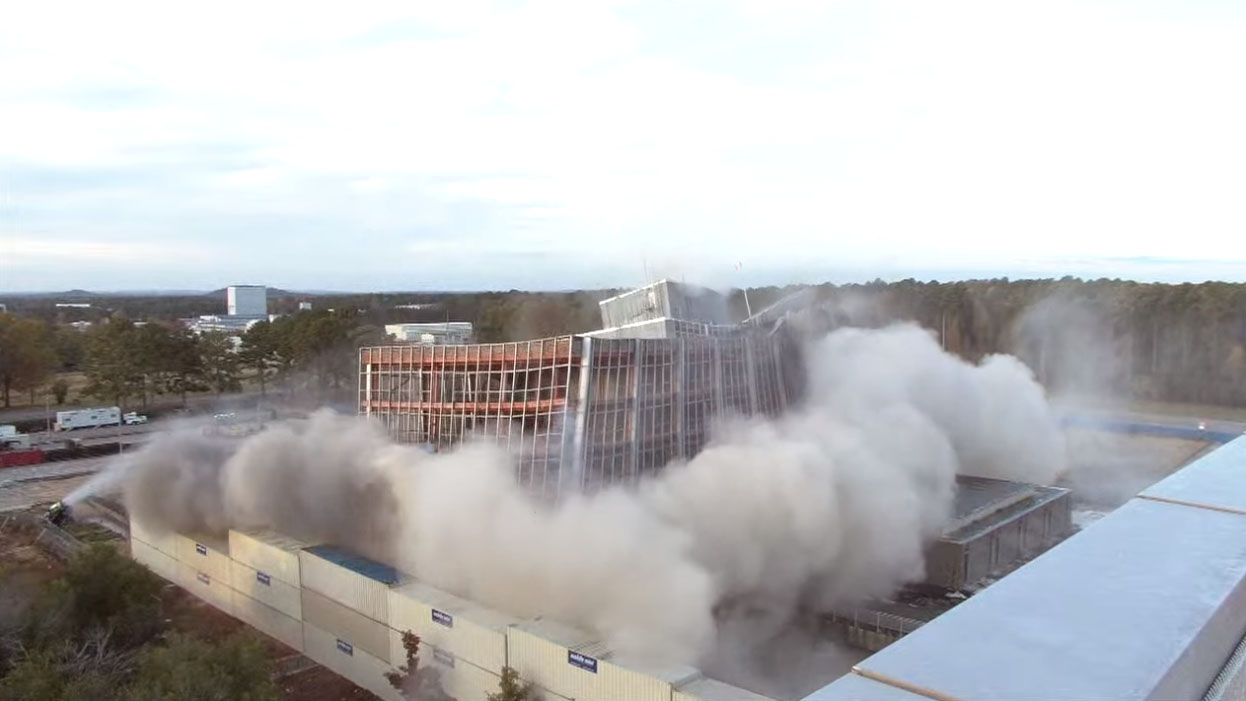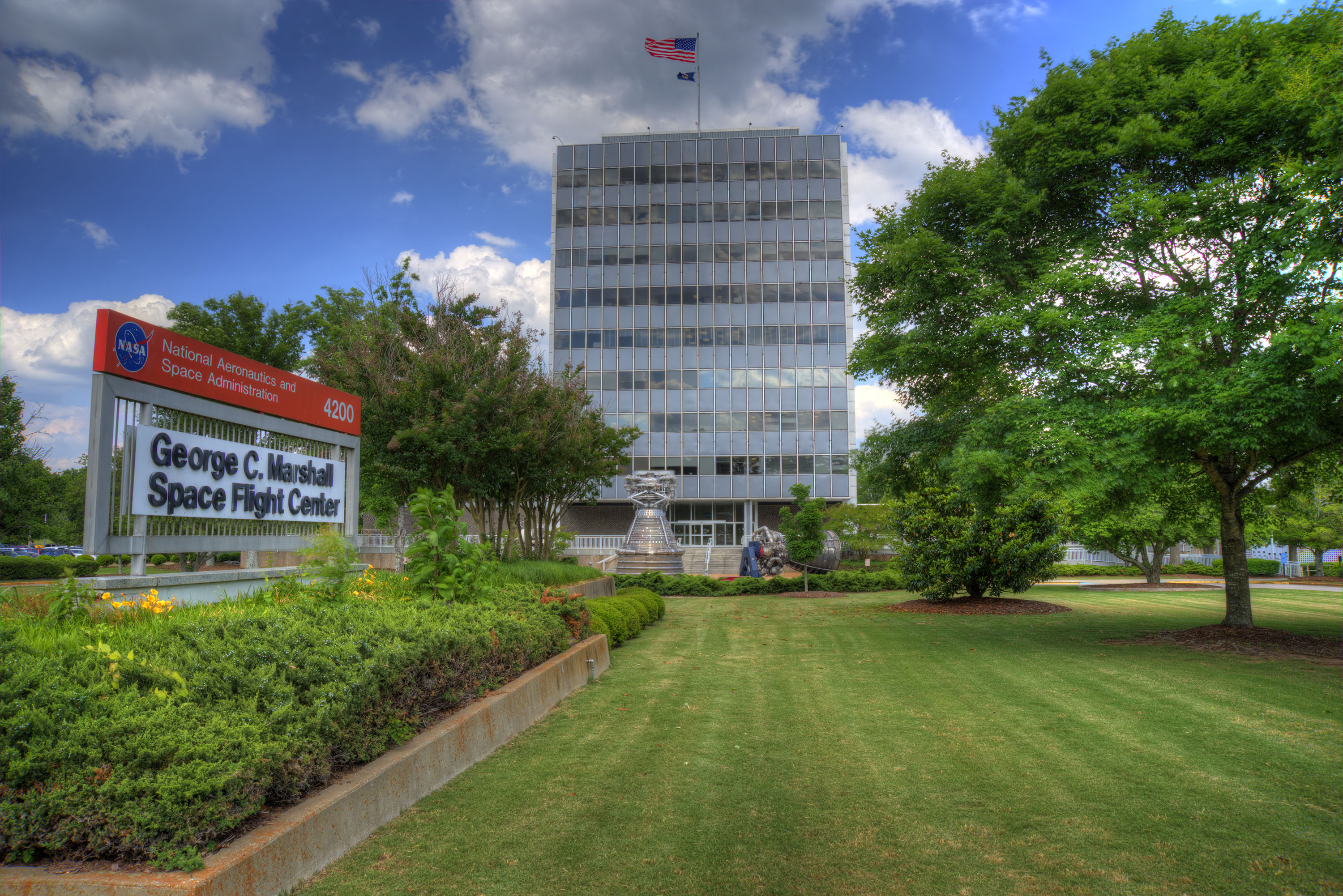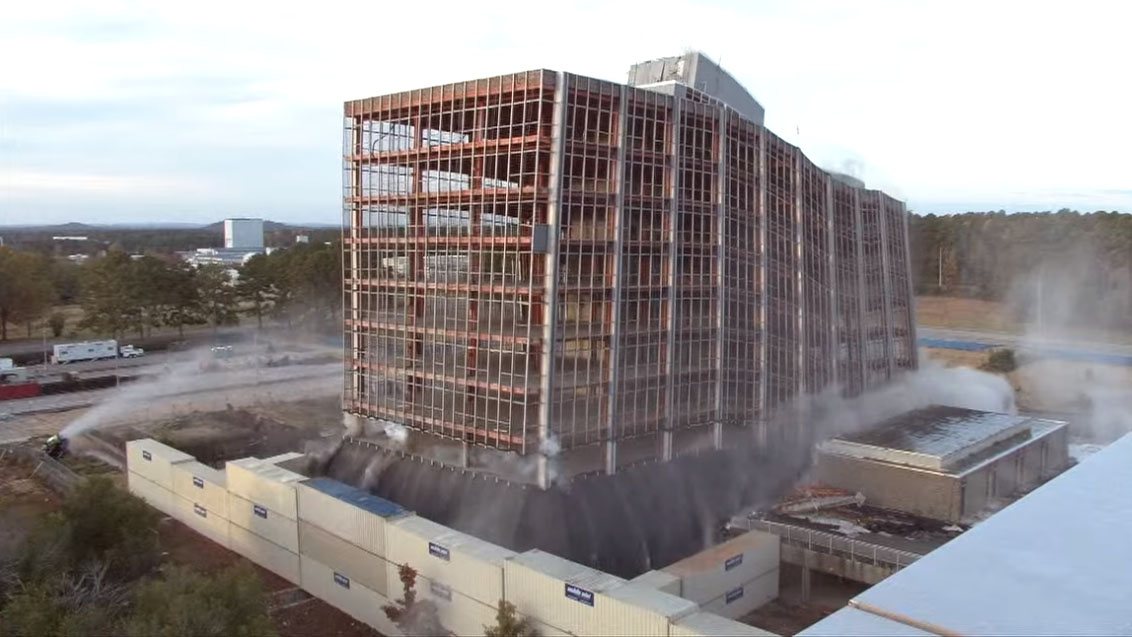See NASA destroy its vintage Marshall Space Flight Center headquarters (video)

NASA destroyed one of its own vintage buildings early Saturday (Oct. 29), sending the vintage structure off with a literal bang.
The space agency intentionally demolished its historic Building 4200, which served as the administrative headquarters of Marshall Space Flight Center in Huntsville, Alabama from 1963 to 2020. The building is being removed to "make way for a series of new, state-of-the-art facilities tailored to help NASA map out the next century's worth of discoveries in space," agency officials said in a statement this month.
NASA destroyed Building 4200 at 8:30 a.m. EDT (1230 GMT) Saturday morning with a controlled implosion that brought the office building, now merely a shell of its former self, down in just a few seconds. NASA webcast the weekend destruction live on YouTube. You can see a replay of the event below at about the 30-minute mark.
Building 4200 had originally been slated for an update in 2030. But engineers found structural problems in its exterior wall panels in 2020, and NASA decided that it made more sense to demolish Building 4200 than to repair and maintain it.
"That decision tugs a lot of heartstrings here," agency officials wrote in the same statement. "The building was home to thousands of Marshall team members over much of six decades. That number includes 14 directors, from Dr. Wernher von Braun — who led rocket development in the 1960s and 1970s — to [current director Jody] Singer, the first woman to serve in the capacity."
The historical preservation team at Marshall, NASA's lead center for rocketry and propulsion research, is working with the agency's History Office and the Alabama State Historic Preservation Office to safeguard Building 4200's history and legacy.
"Thousands of photos, videos and other documents have been archived and made available for public use by the Library of Congress' Historical American Building Survey and Historical American Engineering Record," NASA officials wrote.
Breaking space news, the latest updates on rocket launches, skywatching events and more!
Editor's note: This story was updated on Oct. 29 with details of the successful implosion and destruction of Building 4200, the vintage headquarters building of NASA's Marshall Space Flight Center.
Mike Wall is the author of "Out There" (Grand Central Publishing, 2018; illustrated by Karl Tate), a book about the search for alien life. Follow him on Twitter @michaeldwall. Follow us on Twitter @Spacedotcom or on Facebook.

Michael Wall is a Senior Space Writer with Space.com and joined the team in 2010. He primarily covers exoplanets, spaceflight and military space, but has been known to dabble in the space art beat. His book about the search for alien life, "Out There," was published on Nov. 13, 2018. Before becoming a science writer, Michael worked as a herpetologist and wildlife biologist. He has a Ph.D. in evolutionary biology from the University of Sydney, Australia, a bachelor's degree from the University of Arizona, and a graduate certificate in science writing from the University of California, Santa Cruz. To find out what his latest project is, you can follow Michael on Twitter.


